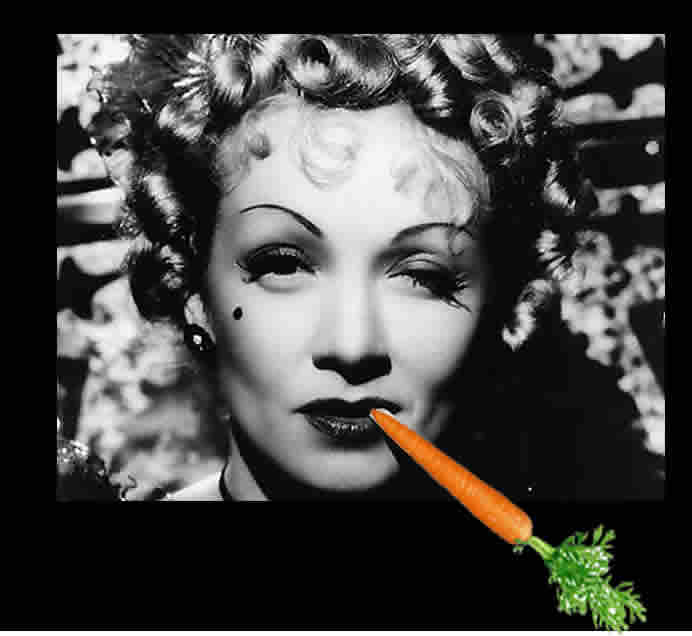
No matter how much temptation and cajoling, we couldn’t get her to eat an Easter egg. At work, Easter is another excuse to eat chocolate and for most of us, we unfurl the Easter egg foil and easily chomp on some chocolate. But the office health nut instead munches on a carrot – about as close to the Easter bunny as they’ll get. But what if they ate too many carrots? Or too many bran muffins? They are actually damaging their body in a way they may not realise; believing advice they read or heard and perhaps taking that advice too far. Yes, it is possible to be too healthy. There is a way though to have a healthy diet – one based on knowing what is reliable advice, and knowing how to follow it.
—-What is too healthy? Why go to extremes? —-
A diet that is too healthy means eating only a limited selection of foods specifically for their purported health properties. The lady who refused the Easter egg may be one who thinks that she will live happy and healthy in a body free from ‘bad food’ – she may even snack continually on carrots for better eyesight. Obsessive behaviour is one reason why people may go to extremes in their healthy eating. Other reasons include a health scare (at risk for osteoporosis), or an excuse to overindulge (red wine and dark chocolate). Many healthy eating extremes are also triggered by the concept of health-crazing.
—What is health-crazing?—
The evidence of health-crazing can be seen on checkout conveyor belts; punnets of blueberries, cans of salmon, and boxes of green tea. ‘So what?’ you might say, ‘What is the difference between the familiar food pyramid and the blurb on a box of tea about the powers of antioxidants?’ Basically, health-crazing is when diet is focused on one food rather than a total approach to health through a balanced diet. Health-crazing isn’t necessarily bad unless it influences the fundamental balance of nutrients within the body.
—When health-crazing goes too far—
Even those of us who aren’t strict with everything in their diet may tend to favour one food. Over a period of about eight months, Suzie* ate three bran muffins each day, and a bowl of bran cereal for breakfast. Sure, she was ‘regular’ but then she was too regular, causing a rectal tear, pain and lethargy. Bran also reduces iron uptake; an explanation for her low haemoglobin level. The solution? She cut down on the bran, and increased so-called ‘stodge’ foods like fats. But what drives the craze that made Suzie fixate on bran? Or an office colleague gulp down their morning blueberry smoothie? The answer is money. Why else would someone steal an entire blueberry field in Canada after the health craze for blueberries reached fever pitch?
The recipe for the smoothie may have come from a women’s magazine, a TV show, or any number of advertisements that bombard us with the latest in food with properties to burn fat, give youth, and arouse libido. But how can you tell if this advice is even genuine?
—What is genuine advice?—
Remember our office colleague at the beginning of the article? Eventually we got her to eat the Easter egg – we used the magic words: ‘Scientists say it’s good for you’. But who are these scientists and can we believe them? There are ways to recognise whether advice used in heath-crazing is genuine.
The hallmarks of dubious advice include.
++ vague source of information – common phrases are mentioned, such as ‘scientists say’ or ‘it has been proven’. There is no reference to who the scientists are, and whether they are from public or private enterprise.
++the entertainment angle – current affairs shows are notorious for their thinly researched stories of magic water and fat loss foods as they know that these topics have sure-fire ratings.
++ marketing angle/money to be made. For example, advertorials about the benefits of high calcium intake from a company that just happens to sell calcium enriched milk.
Genuine advice is.
++ sourced from a thorough study – peer reviewed, trialled and the product/thoery is used over a period of time.
++ endorsed – if a government body also endorses scientific findings then this adds credibility to the discovery. But be wary of endorsement that sounds important but is really just a front for commercial organisations eg the ‘Tobacco Information Service’ run by the Tobacco Merchants Association.
++ able to be researched for yourself – look for a source, such as in a medical journal. Then go and read the full article. Look for how the study was conducted, how many participants, what was the error margin, etc.
Does all this reading and double-checking sound like a lot of effort? Who do we believe? Thankfully there is an answer to a truly healthy diet and it doesn’t involve hard work or sacrifice; it’s about getting the balance right.
The Recommended Daily Intake – RDI – is a proven scientific analysis of all the nutrients the body needs to function at optimal level. Each macronutrient (eg carbohydrate), vitamin (eg Vitamin C) and mineral (Eg Calcium) has a measurement that the body must intake each day, ranging from micrograms to grams. But how do you know if you’re meeting this level, or exceeding it?
Read the labels on the packaging, for example, a slice of typical wholemeal and grain bread has 7% of the RDI for iron. Be aware of which nutrients have an upper limit that must not be exceeded or else adverse health effects may arise. For example, any more than five carrots a day (Vitamin A Carotene) will cause skin to tinge orange. Fat soluble Vitamin A Retinol found in liver and fortified milk, in the short term can cause headaches and vomiting and in the longer term, hair loss and liver damage if consumed in greater quantities than 3000 milligrams a day, which is approx three times the RDI usually caused by exceeding dosages in vitamin supplements.
Being too healthy can be harmful to your health unless you follow genuine advice within scope of the RDI. The key to a truly healthy diet is balance; never ever eat too much of one thing, and allow some indulgences like Easter eggs. After all, the Easter bunny eats carrots, but he eats chocolate too.
* Name changed.
And if you doubt the facts in I’ve written, then good, I’ve proved my point.
Go read more about where I got the information:
+++Carrots turning skin orange: www.dietitician.com/vitamina.html
+++Too much Vitamin A retinol: Department of Health and Ageing and Ministry of Health, 2006, Nutrient Reference Values for Australia and New Zealand Executive Summary, Commonwealth of Australia. PDF From www.nhmrc.gov.au
+++Stealing a Blueberry farm: http://bluecrabbouevard.com, Sep 21 2006
+++What happens when you overdose on vitamins: Note, can you trust these sources?: LifeForce Hospitals, 1999, ‘Vitamin Overdose’ `http://chemo.net/newpage35.htm 1999 and
Changing Shape, ‘Vitamin, mineral, chart’, www.changingshape.com/resources/references/vmchart.asp
Tobacco Merchants Association: www.tma/org tobacco
Typical bread iron quantity: Burgen bread, www.burgen.co.nz






